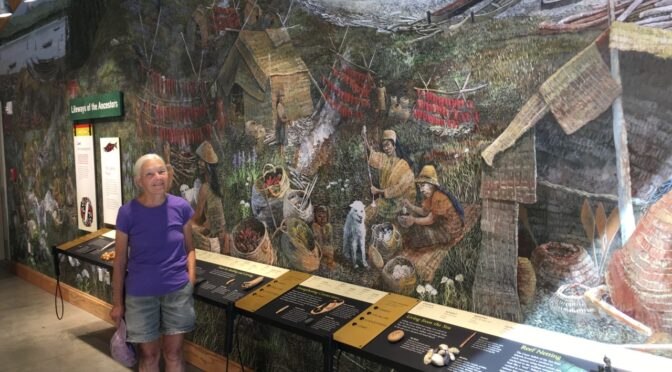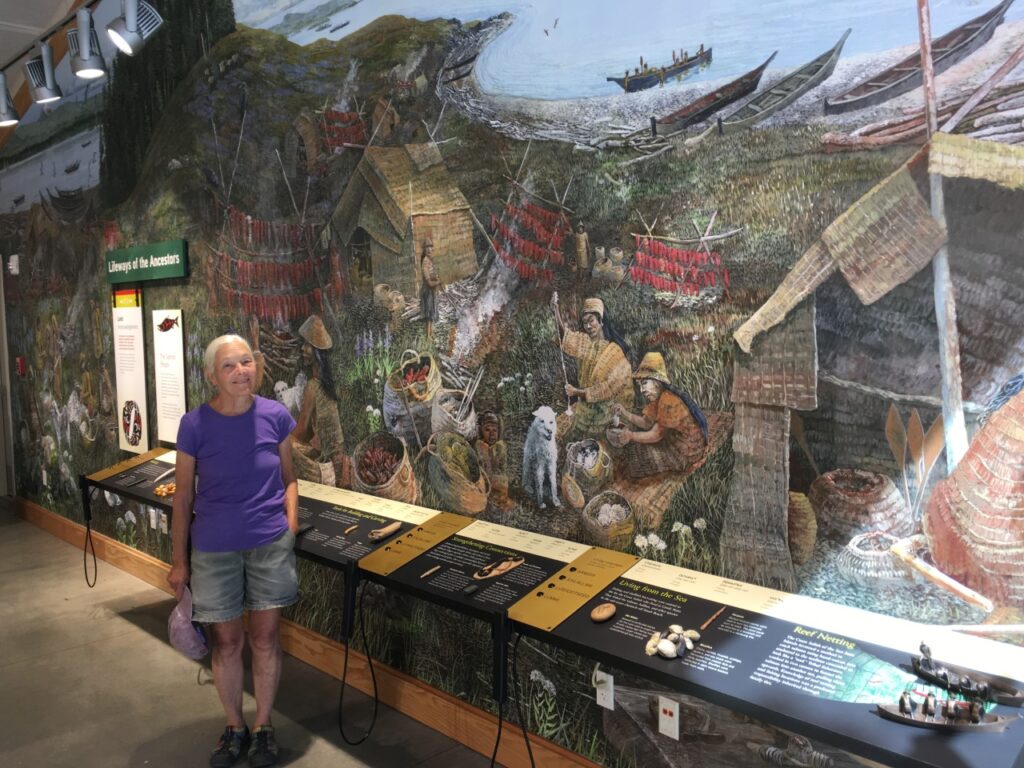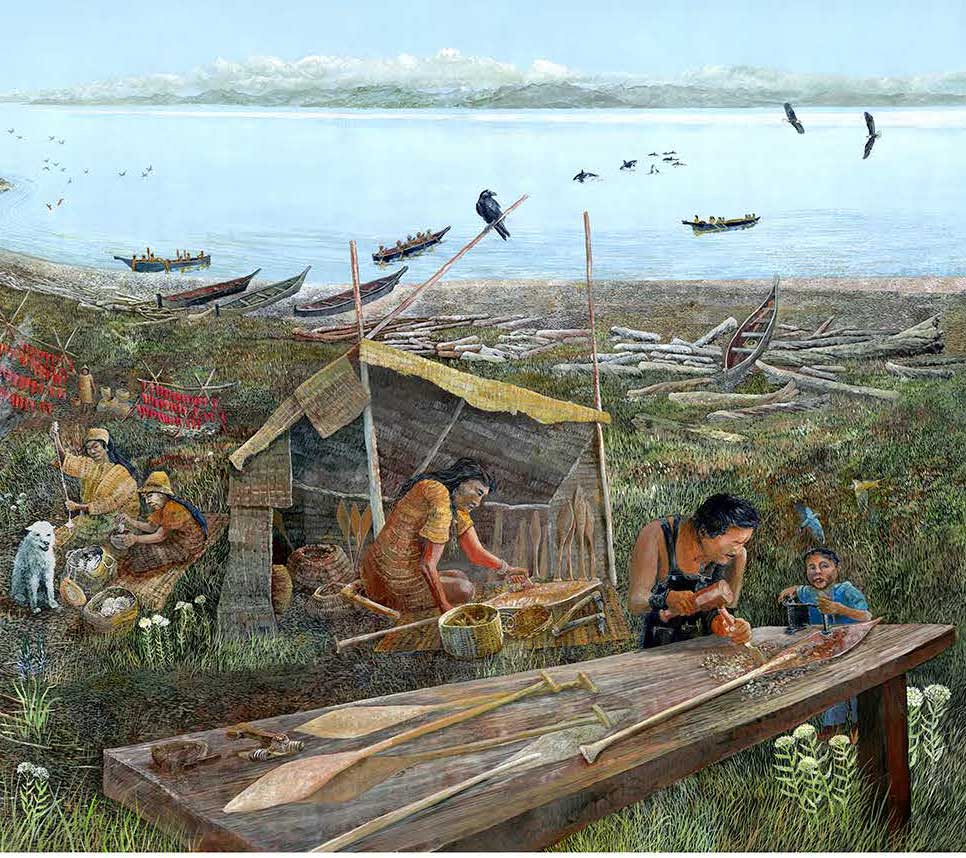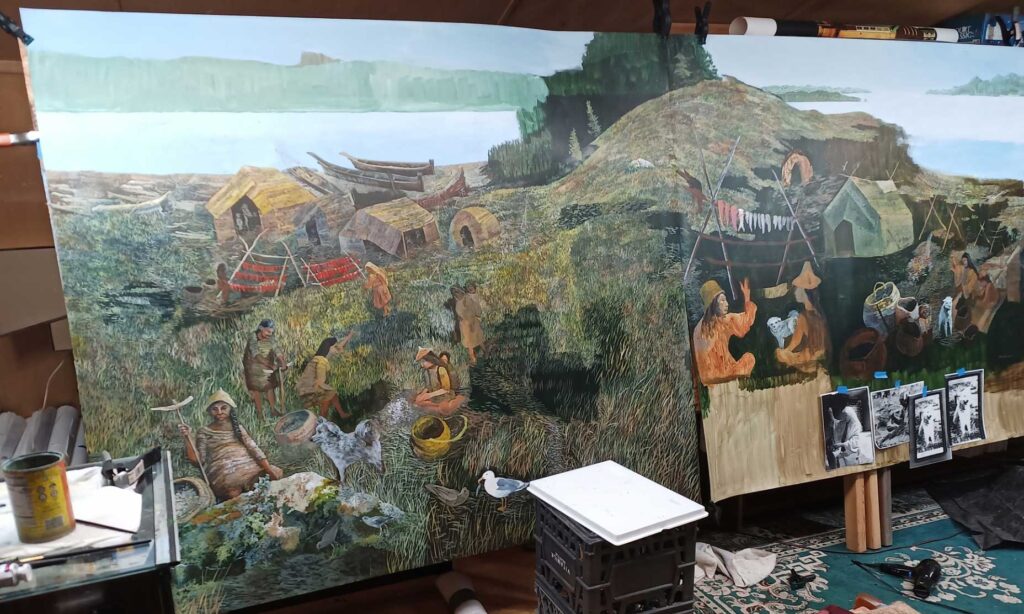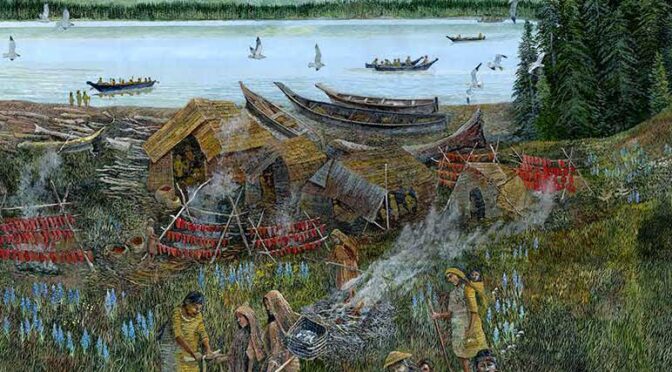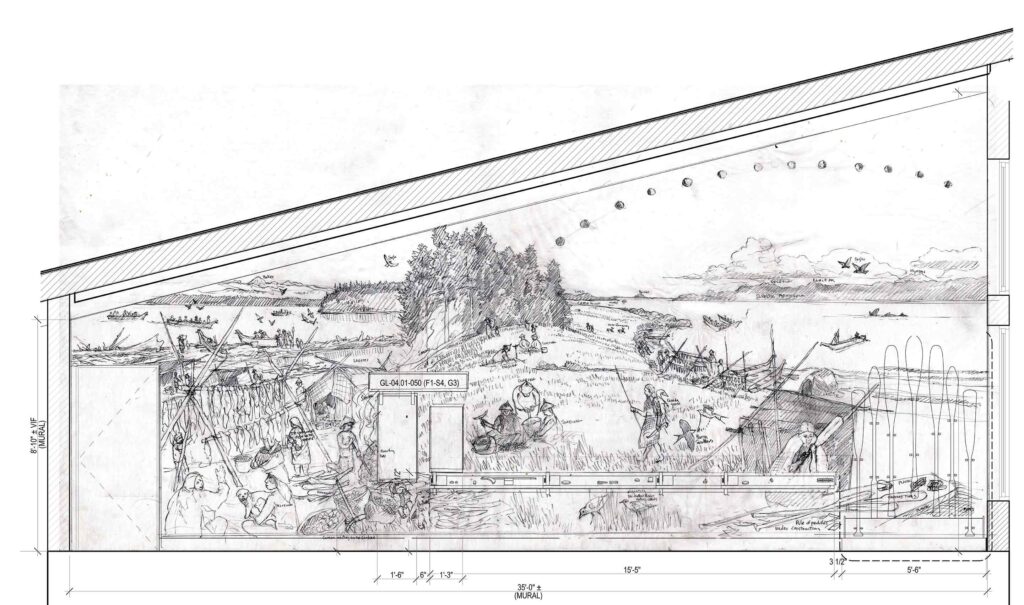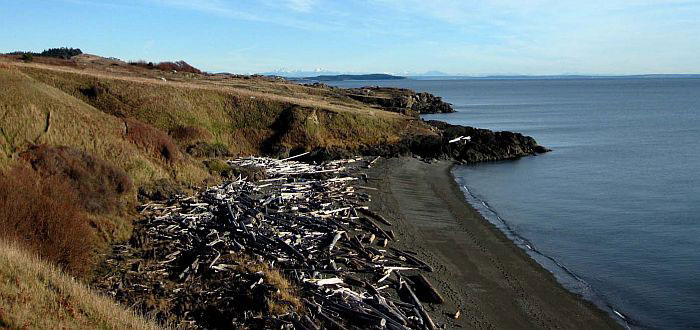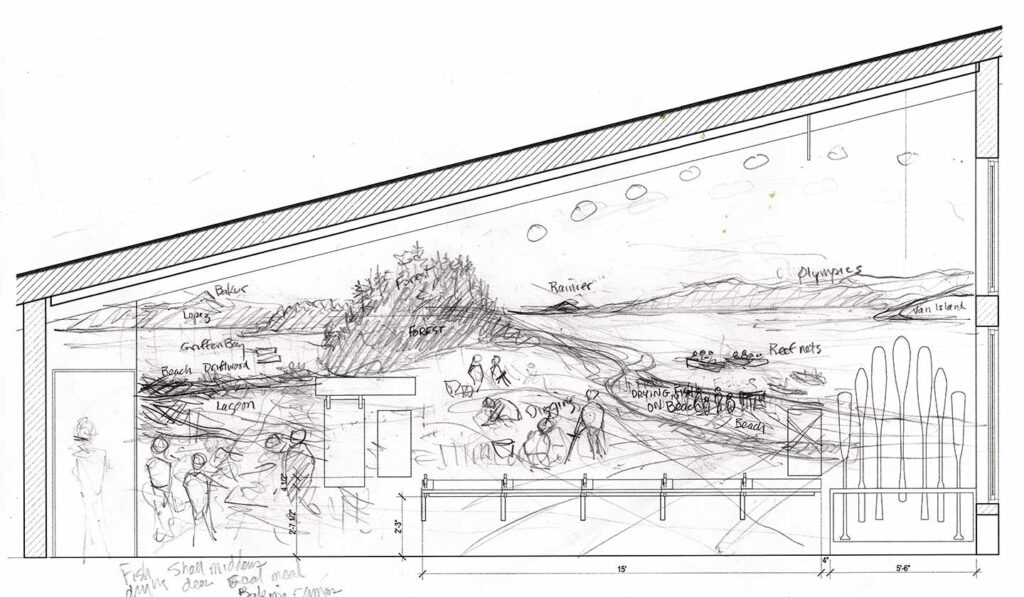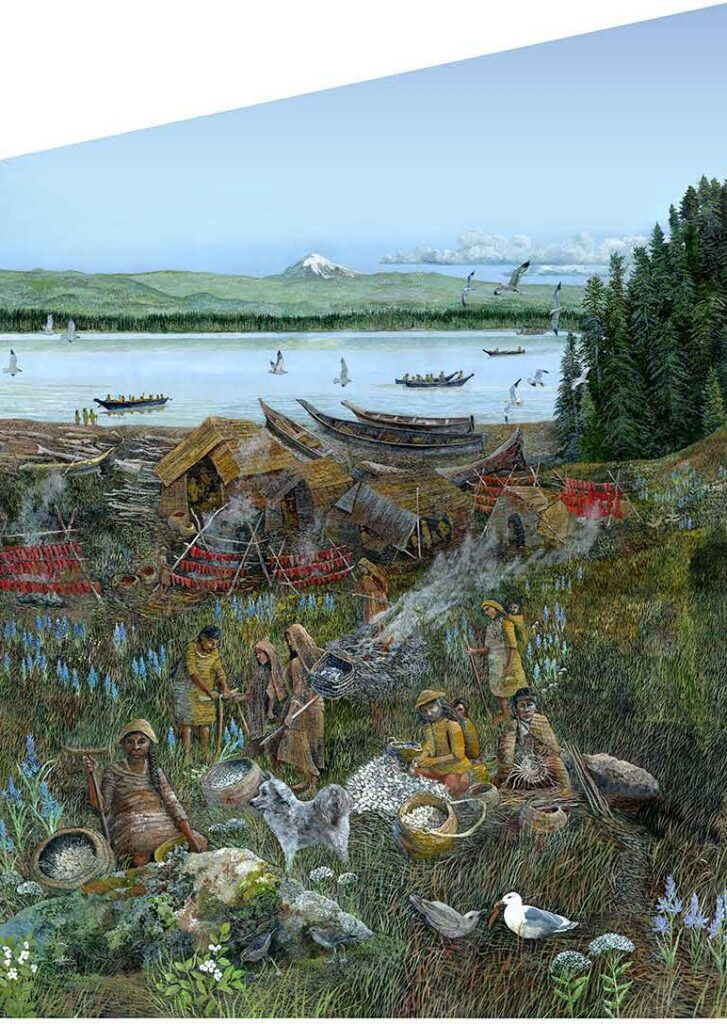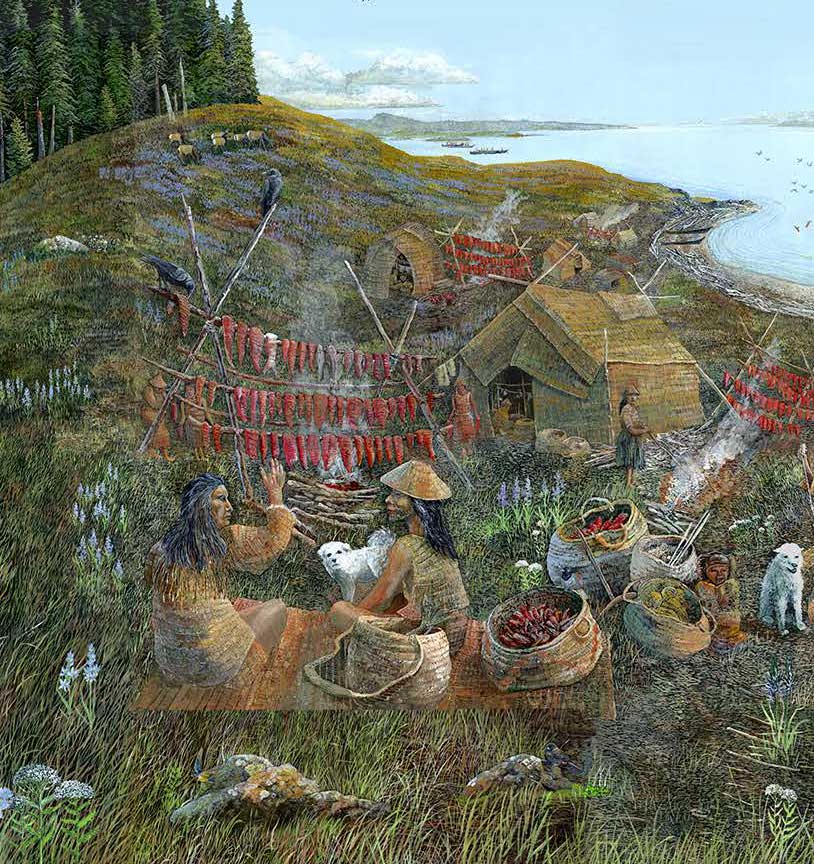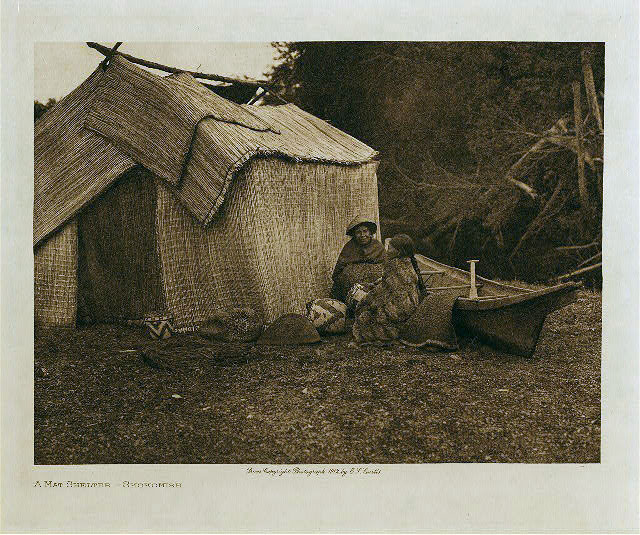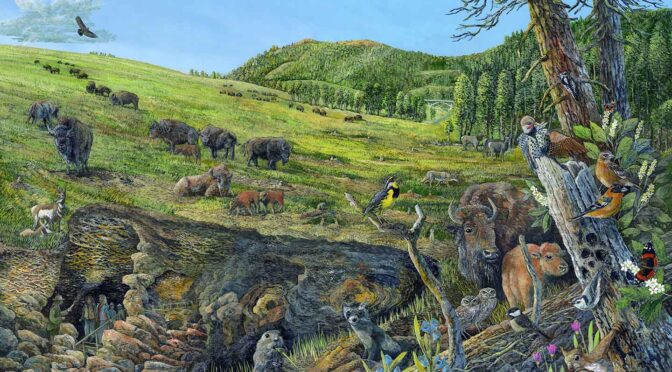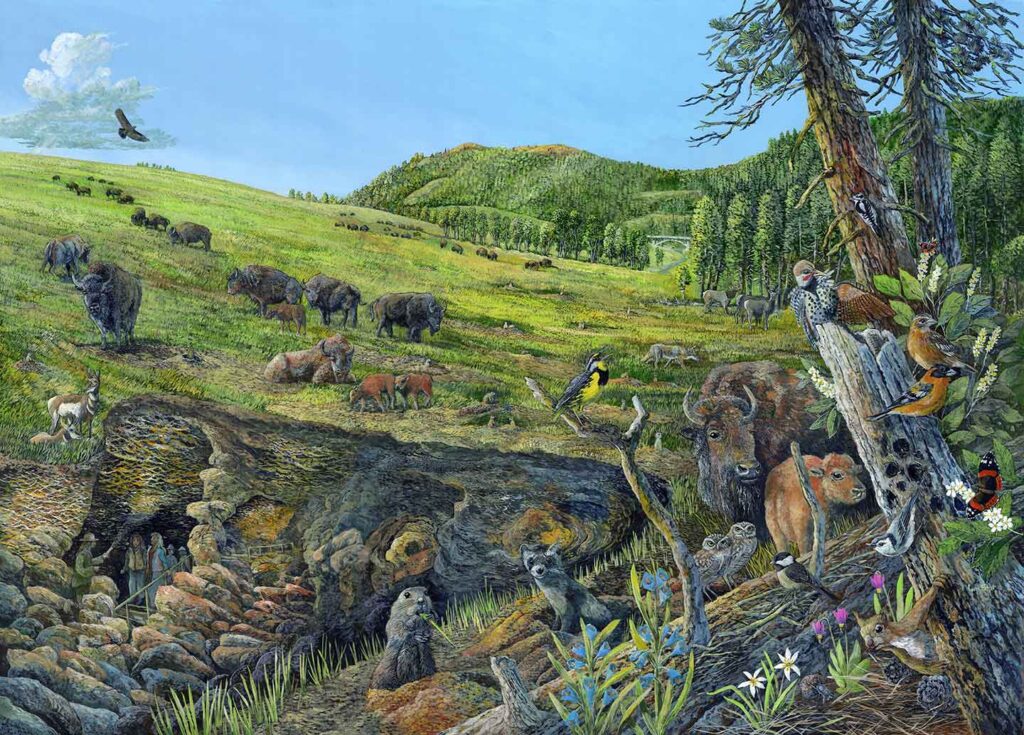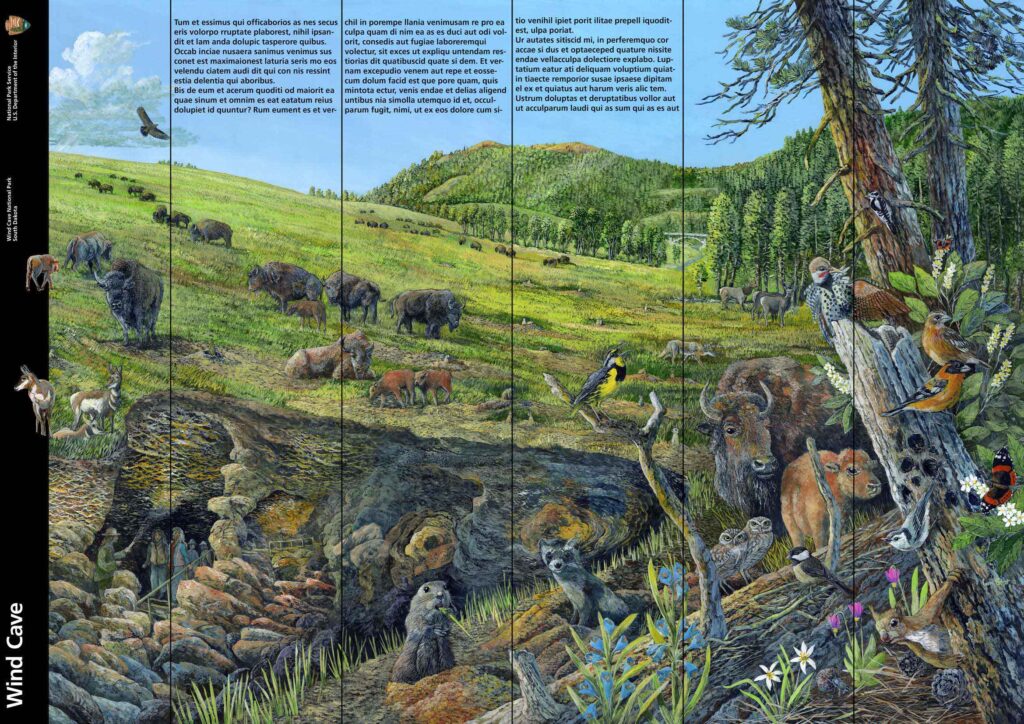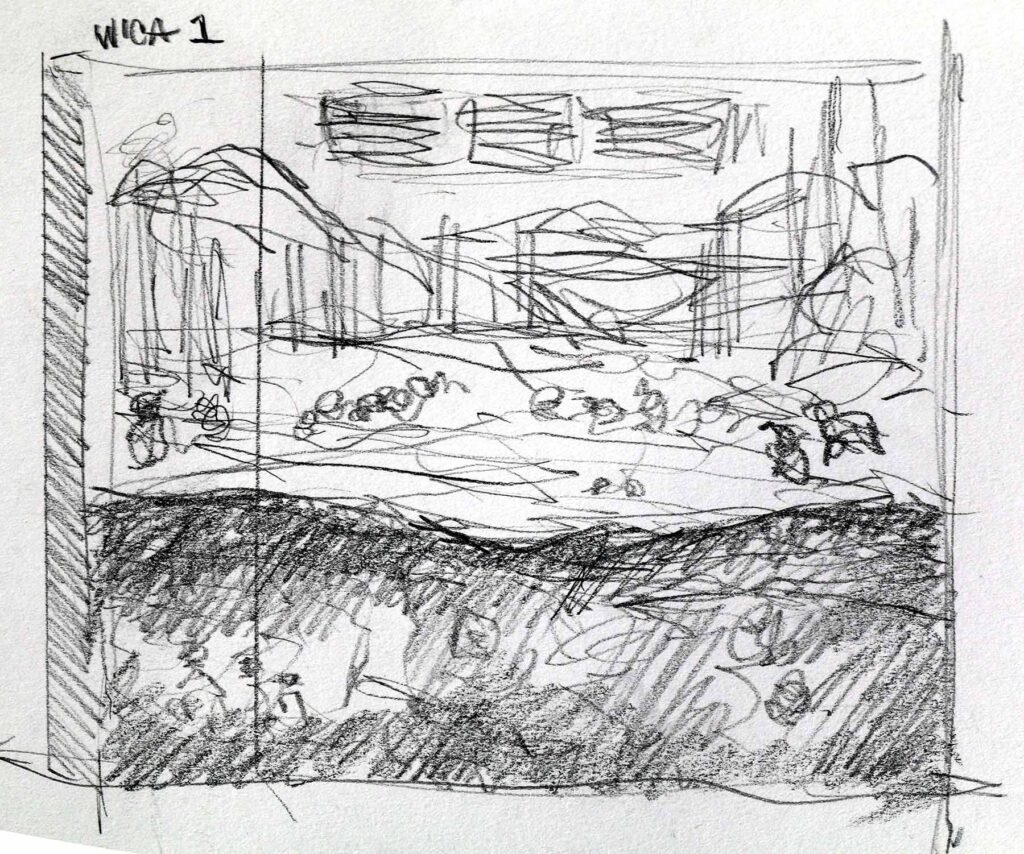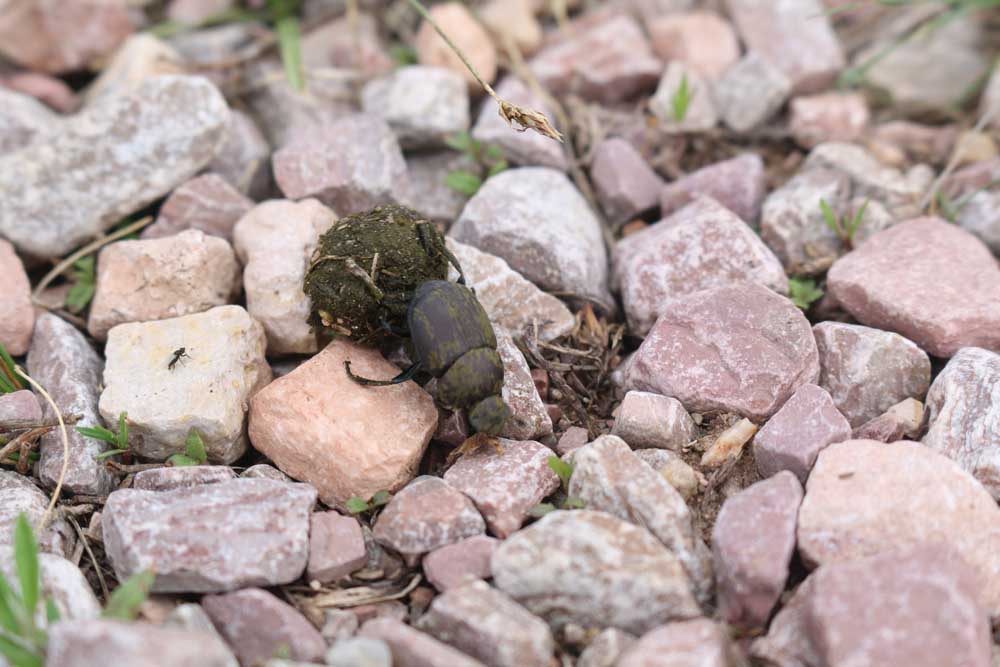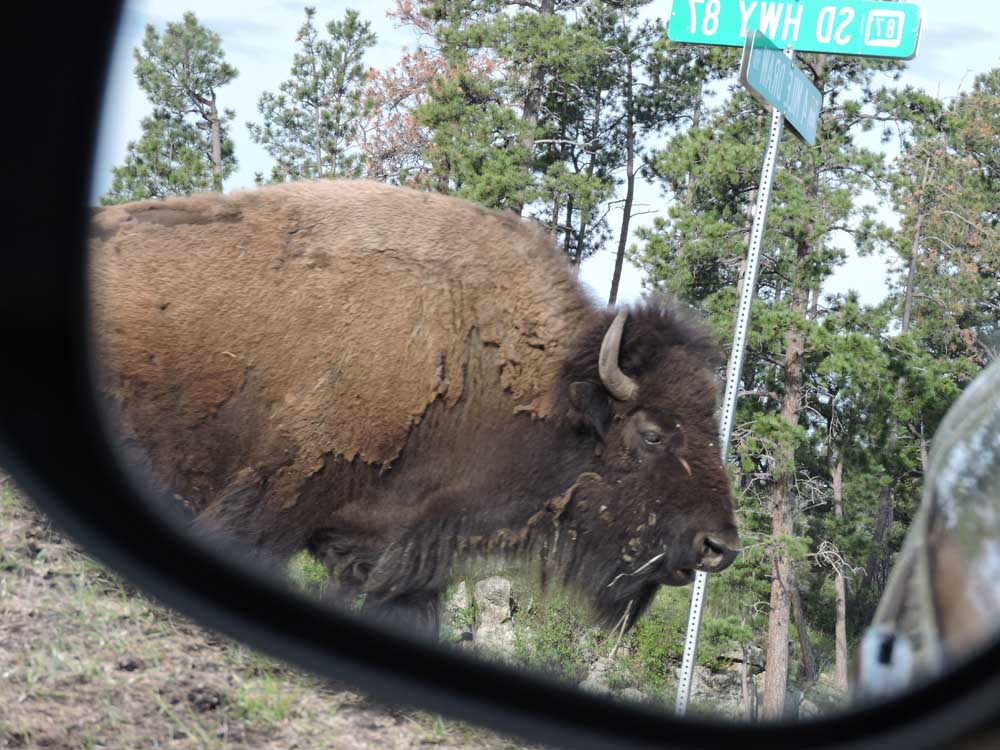Getting close to the final brushstroke on this 35-foot wall for the San Juan National Historical Park visitor center mural. How does a painter know when it’s the final brush stroke? When he can’t stand to make another one! (or so the old saying goes.) This wall was probably more brush strokes that I would have liked, but the entire process was interesting, challenging and really fun. I can’t help but feel grateful for the opportunity.
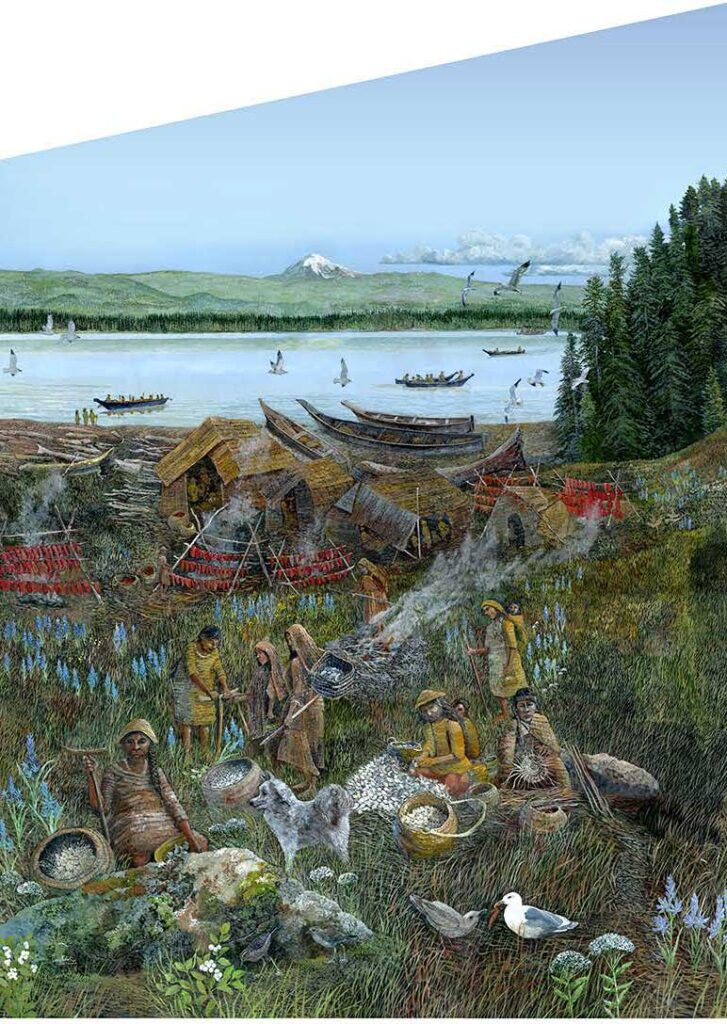
Here are some section shots that should enlarge in your browser so you can see it better. I think there are around 105 Indians, 18 gulls, 3 eagles and 2 wool dogs. Those wool dogs are an extinct species of dogs tribal weavers would use for wool, and I have one of them spinning with a drop spindle.
The scene is at South Beach, San Juan Island, Washington, a place that is now a national historic park. Historically, It’s a park because of the Pig War in 1859 between the U.S. and Britain. In reality, the “history” is more about the giant salmon runs in late summer, when millions of fish coming down the Strait of Juan de Fuca would crowd the shoreline. For thousands of years, many different tribes would show up here to catch and dry a few of these fish, and also dig camas bulbs, and catch up on the news. Both the salmon and camas flour were important winter foods.
The painting is supposed to show pre-European contact, so no iron, steel, or woven cotton fabric. It was fun to research all this, but it’s also why I enjoy making art so much for the National Park Service. We both feel art is a good way to show our legacy, our history and future (see the current generation and future generation down in the right corner). The NPS seriously pushes me to paint beyond what I’ve ever thought I’d paint. This project made me realize how grateful I am for taking physics and algebra in high school!
Here’s a photo of my studio with part of this being painted. See those reference photos down along the bottom? Nancy was my model for almost every one of the people.
Below is the visitor center wall this is going on. It’ll be installed by early summer if we’re all lucky, along with another 11 paintings from me, and all the other exhibits. Capitol Museum Services from Manassas Virginia is doing the installation.
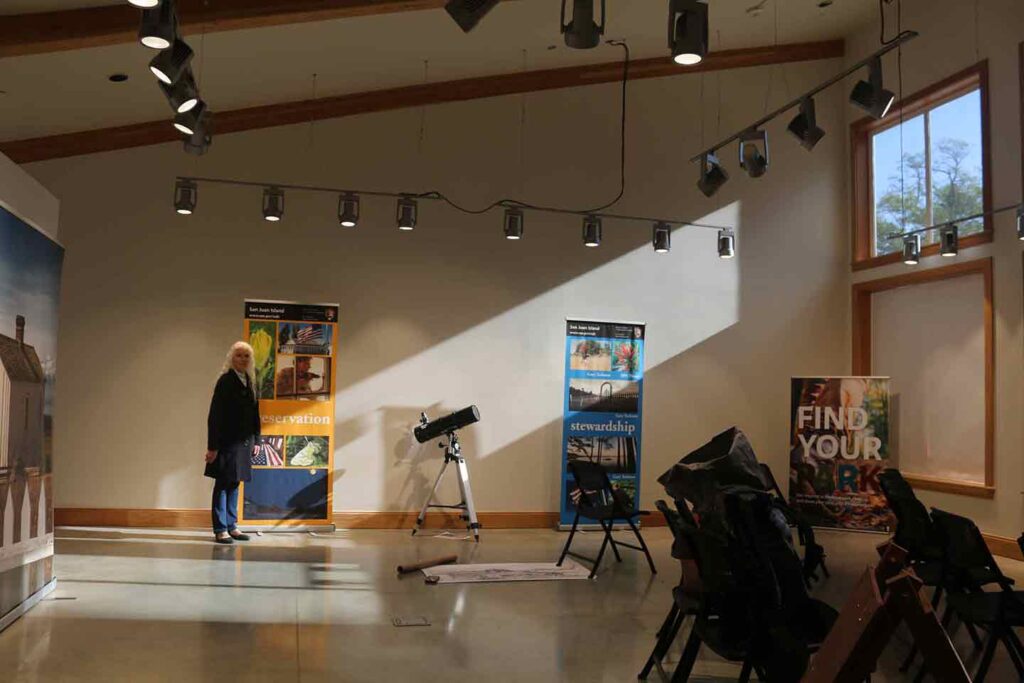
The outside of the new visitor center with Nancy in front and a truly amazing Douglas-fir that they basically built the building around. Most commercial projects would have just bulldozed the tree, cleared the land and then planted little Mall-Ready trees, but not the NPS!

And the last two photos are the location of the painting a quarter mile from the visitor center. It’s actually a couple of square miles of landscape all pushed together into one painting, add people, voila!
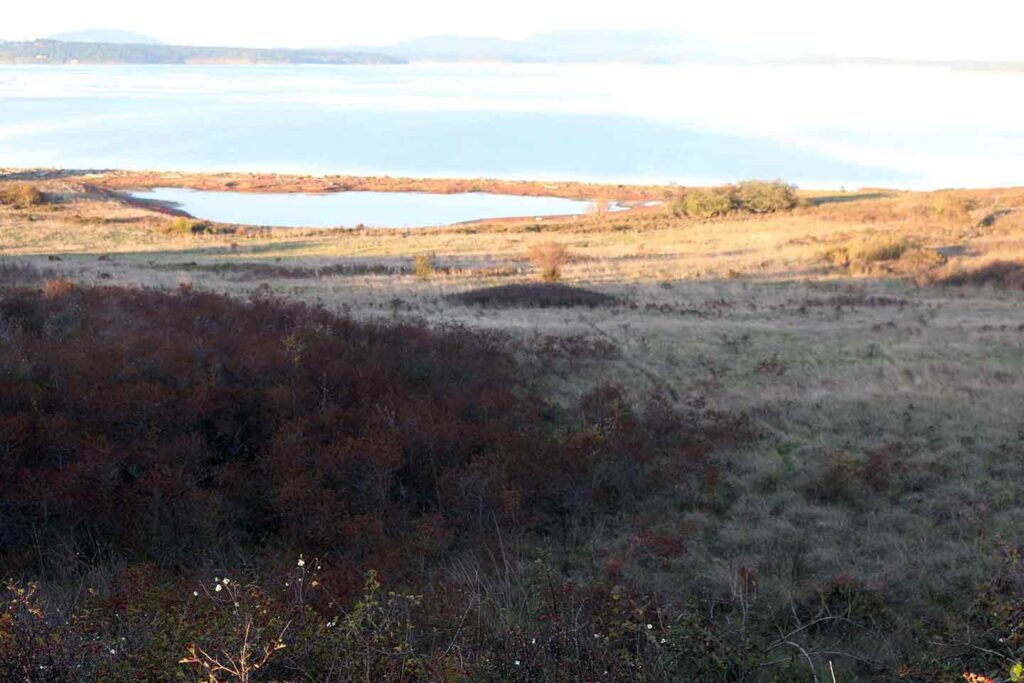
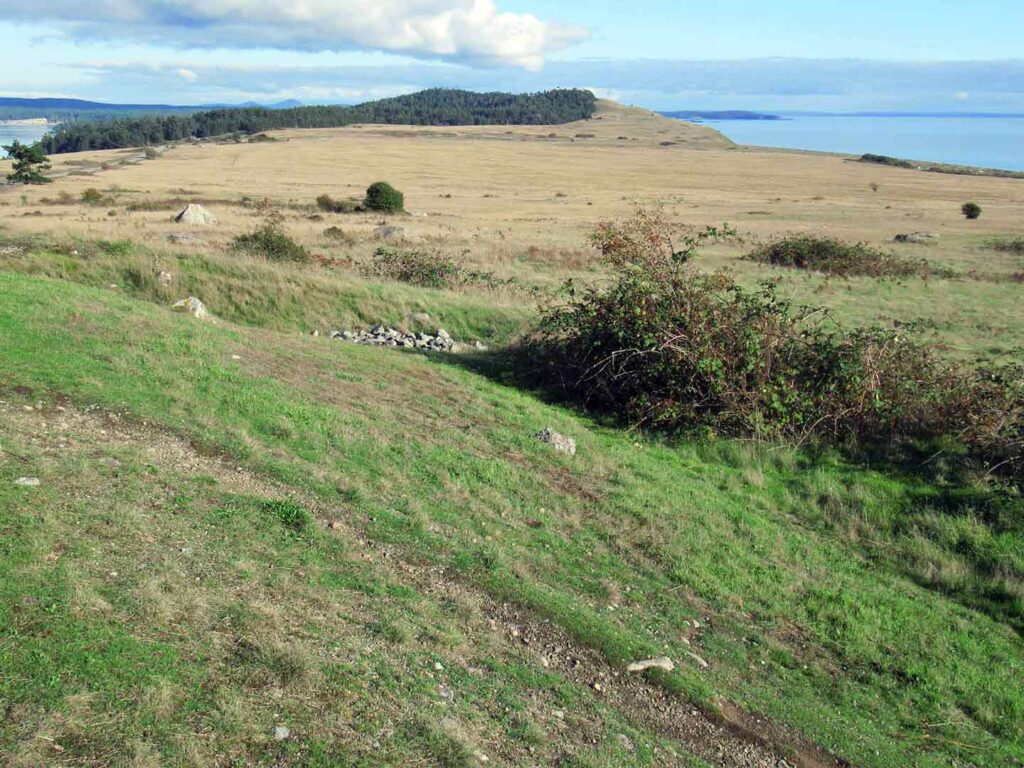
When I was growing up, the kid of two people who worked for the Illinois State Museum in Springfield, Illinois, I would go down to the museum after school. My babysitters were the curators who were building giant habitat exhibits much like this new wall mural. Most of the exhibits were about nature, but a couple were of Indian life. Robert Larson, a famed painter in charge of this (and a big man who didn’t need a ladder to paint the sky) would talk to me as he worked about what he was doing. I was always a little kid with his mouth open in awe. That was 60 years ago! I know Bob would have enjoyed this, wanted to be a part of it. His kindness and friendship, along with all the rest of those wonderful people in the museum’s back end, are still a factor in my life.
Here’s a photo of Larson doing a plaque of my mom after her death. It’s in the Virginia Eifert Book Store in the museum. And below, one of his big Indian paintings at the museum.

More soon. Stay tuned. Feel free to pass this around. People seem to enjoy seeing my process.
Thanks for reading this week. You can sign up for emails for these posts on my website at larryeifert.com.
Larry Eifert
Here’s my Facebook fan page. I post lots of other stuff there.
Click here to go to our main website – with jigsaw puzzles, prints, interpretive portfolios and lots of other stuff.
Nancy’s web portfolio of stunning photography and paintings.
